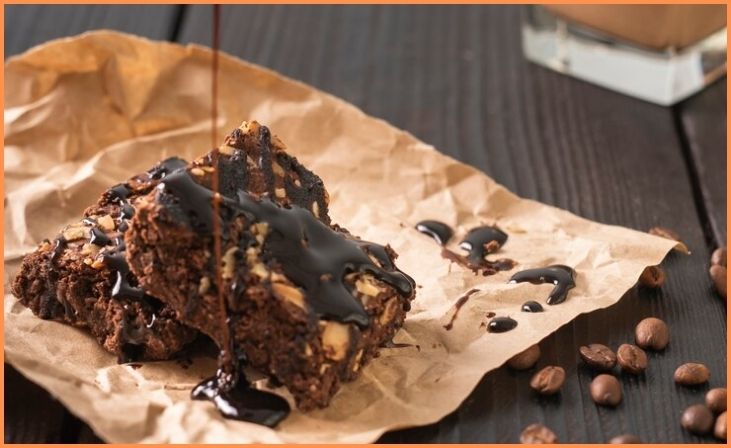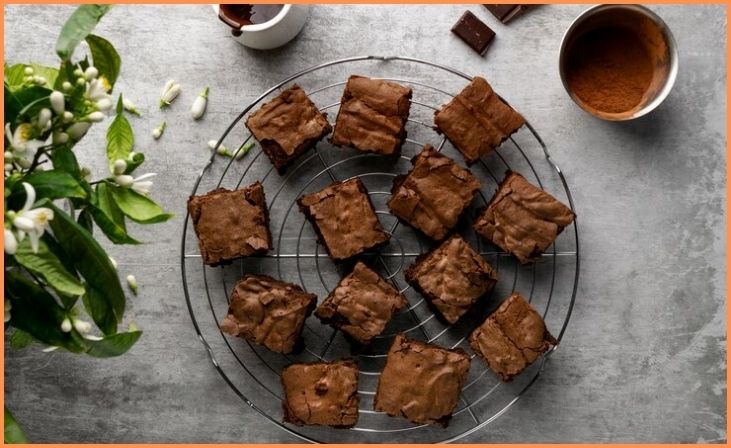Brownies are a quintessential indulgence, loved by people of all ages. Among the various brownie variations, the classic chewy brownie stands out for its rich flavor, moist texture, and irresistible chewiness. Whether enjoyed as a midnight snack, a lunchbox treat, or a dessert for special occasions, mastering the art of baking classic chewy brownies is a skill every home baker should acquire. In this article, we delve into the secrets behind creating the perfect batch of chewy brownies that will have everyone coming back for seconds.
The Origin of Chewy Brownies
Brownies have been a staple in American baking since the late 19th century. The exact origin of brownies, particularly chewy brownies, remains a subject of debate among culinary historians. However, it’s widely agreed upon that the first brownie recipes appeared in cookbooks around the turn of the 20th century.
Chewy brownies, in particular, are prized for their dense and fudgy texture, which sets them apart from cakey or crumbly brownies. Achieving the desired chewiness involves careful selection and balance of ingredients, as well as precise baking techniques.

Key Ingredients for Classic Chewy Brownies
High-Quality Chocolate
The foundation of any exceptional brownie is premium quality chocolate. Opt for dark chocolate with at least 60% cocoa content for a rich and intense flavor. You can also customize the flavor by incorporating semi-sweet or milk chocolate according to your preference.
Butter
Butter adds moisture and richness to brownies, contributing to their dense and chewy texture. Use unsalted butter for better control over the overall saltiness of the brownies.
Also Read – Mastering the Art of Authentic Chinese Fried Rice: A Step-by-Step Recipe Guide
Sugar
A combination of granulated sugar and brown sugar is commonly used in chewy brownie recipes. Brown sugar enhances the chewiness and provides a subtle caramel undertone, while granulated sugar adds sweetness and helps achieve a crispy exterior.
Eggs
Eggs serve as both a binding agent and a leavening agent in brownie batter. They contribute to the structure and tenderness of the brownies while also adding moisture. Beating the eggs well during the mixing process helps incorporate air into the batter, resulting in a lighter texture.
Flour
The type of flour used can significantly impact the texture of the brownies. All-purpose flour is commonly used for its versatility, but some recipes call for cake flour or a combination of flours to achieve a softer and more tender crumb.
Cocoa Powder
Cocoa powder intensifies the chocolate flavor and contributes to the rich, dark color of chewy brownies. Dutch-processed cocoa powder is preferred for its smooth texture and mild flavor.
Salt
A pinch of salt enhances the overall flavor of the brownies and helps balance the sweetness of the other ingredients. For even distribution, use kosher or fine sea salt.
Baking Techniques for Chewy Brownies
Melting Chocolate and Butter
Start by melting the chocolate and butter together using a double boiler or a microwave. Stir the mixture frequently to ensure smooth and homogeneous melting, then set it aside to cool slightly before incorporating other ingredients.
Mixing the Batter
In a separate bowl, whisk together the sugars and eggs until light and fluffy. Gradually add the melted chocolate mixture, followed by the sifted cocoa powder and flour. Mix until just combined, being careful not to overmix, as this can result in tough brownies.
Incorporating Additions
While classic chewy brownies are delicious on their own, you can elevate them further by adding nuts, chocolate chips, or swirls of caramel or peanut butter. Gently fold these additions into the batter just until evenly distributed.
Baking Time and Temperature
Proper baking time and temperature are crucial for achieving the desired chewiness in brownies. Preheat your oven to the specified temperature in the recipe and use an oven thermometer to ensure accuracy. Bake the brownies in the center of the oven for the recommended time, being cautious not to overbake, as this can result in dry and crumbly brownies.

Testing for Doneness
To determine if the brownies are done, insert a toothpick into the center of the pan. The toothpick should come out with a few moist crumbs clinging to it, but not wet batter. Remember that residual heat will continue to cook the brownies slightly after removing them from the oven.
Also Read – 11 Unique Nutritional Benefits of Lemon
Conclusion
Mastering the art of classic chewy brownies requires attention to detail, quality ingredients, and practice. With the right techniques and a bit of experimentation, you can achieve brownies that are perfectly dense, fudgy, and irresistibly chewy. Whether enjoyed warm with a scoop of ice cream or packed as a lunchbox treat, classic chewy brownies are sure to delight your taste buds and evoke nostalgia with every bite. So, roll up your sleeves, preheat your oven, and embark on a delicious journey to brownie bliss!
FAQs
Can I use milk chocolate instead of dark chocolate for chewy brownies?
While dark chocolate is preferred for its intense flavor, you can substitute milk chocolate if you prefer a sweeter taste. Adjust the amount of sugar accordingly to maintain the desired sweetness level.
How can I achieve a gooey center in my chewy brownies?
To achieve a gooey center, slightly underbake the brownies and allow them to cool completely before slicing. The residual heat will continue to cook the center, resulting in a deliciously gooey texture.
Can I add nuts or other mix-ins to my chewy brownies?
Absolutely! Feel free to customize your chewy brownies by adding chopped nuts, chocolate chips, or even dried fruit to the batter before baking. Be sure to fold them in gently to ensure even distribution.
What is the best way to cut chewy brownies without them crumbling?
For clean, neat slices, use a sharp knife and wipe it clean between cuts. You can also chill the brownies in the refrigerator for an hour before slicing to firm up the texture.


